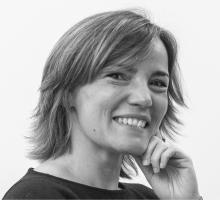{Enhancement of osteogenic differentiation of human adipose derived stem cells by the controlled release of platelet lysates from hybrid scaffolds produced by supercritical fluid foaming}
- Citation:
- Santo VE, Duarte AR, Popa EG, Gomes ME, Mano JF, Reis RL. {Enhancement of osteogenic differentiation of human adipose derived stem cells by the controlled release of platelet lysates from hybrid scaffolds produced by supercritical fluid foaming}. Journal of Controlled Release. 2012;162. copy at https://docentes.fct.unl.pt/ard08968/publications/enhancement-osteogenic-differentiation-human-adipose-derived-stem-cells-contro
Abstract:
A new generation of scaffolds capable of acting not only as support for cells but also as a source of biological cues to promote tissue regeneration is currently a hot topic of in bone Tissue Engineering (TE) research. The inclusion of growth factor (GF) controlled release functionalities in the scaffolds is a possible strategy to achieve such goal. Platelet Lysate (PL) is an autologous source of GFs, providing several bioactive agents known to act on bone regeneration. In this study, chitosan-chondroitin sulfate nanoparticles loaded with PL were included in a poly(d,l-lactic acid) foam produced by supercritical fluid foaming. The tridimensional (3D) structures were then seeded with human adipose-derived stem cells (hASCs) and cultured in vitro under osteogenic stimulus. The osteogenic differentiation of the seeded hASCs was observed earlier for the PL-loaded constructs, as shown by the earlier alkaline phosphatase peak and calcium detection and stronger Runx2 expression at day 7 of culture, in comparison with the control scaffolds. Osteocalcin gene expression was upregulated in presence of PL during all culture period, which indicates an enhanced osteogenic induction. These results suggest the synergistic effect of PL and hASCs in combinatory TE strategies and support the potential of PL to increase the multifunctionality of the 3D hybrid construct for bone TE applications. © 2012 Elsevier B.V. All rights reserved.
Notes:
n/a
